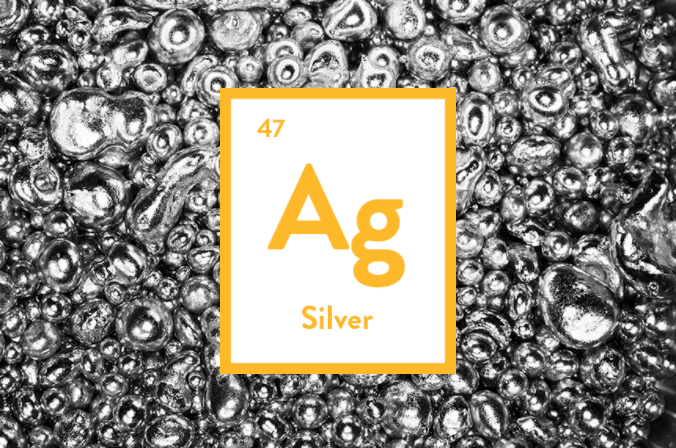Silver and silver compounds have been registered. All these dossiers are now in the maintenance phase. In 2014, silver was listed on the CoRAP (Community Rolling Action Plan) list for Substance Evaluation for concerns related to environmental behavior and ecotoxicity of nanoforms. The final decision was issued in June 2016 and requested information on ecotoxicity, physico-chemical properties and uses of nanosilver. Furthermore, if any of the ecotoxicity tests indicated a higher toxicity for the nanoform than for ionic silver, information on environmental fate of nanosilver had to be provided. The dossier has been updated in July 2017 with the information on ecotoxicity, physico-chemical properties and uses of nanosilver. Since the ecotoxicity tests did not indicate a higher toxicity for the nanoform than for ionic silver, further fate testing was not needed. The conclusions of the Substance Evaluation drafted by the Netherlands have been available since November 2018. Substance evaluation – CoRAP.
Silver metal – harmonized classification process
EPMF notes the adoption of the All news – ECHA (europa.eu) of the European Chemicals Agency’s Risk Assessment Committee (RAC) on silver, which recommends a harmonised human health classification for reproductive toxicity (category 2 – fertility (H361F)) and Specific Target Organ Toxicity – Repeated Exposure (STOT RE category 2 (brain)) for nano-silver, silver metal (massive and powder forms) and a harmonised environmental classification for aquatic acute 1 and aquatic chronic 1 for silver powder and silver nano.
EPMF is disappointed that the RAC chose not to make a differentiation between silver metal (massive and powder) and nanosilver, despite scientific evidence presented to the RAC as part of the opinion making process. Our industry remains convinced that, based on recent scientific studies, a differentiation should be drawn between the behaviour of different forms of silver for human health endpoints and silver metal (massive and powder) should not receive the same harmonised classification for reproductive effects, nor for STOT RE than nanosilver.
We urge the Commission and Member States to take this evidence into account as they consider the RAC’s opinion in their decision-making process.
The RAC opinion has been published on 8th February 2023 on the ECHA website: Registry of CLH intentions until outcome – ECHA (europa.eu). It has been used by the Commission and EU Member States in developing an adaptation to Annex VI of the Classification, Labelling and Packaging (CLP) Regulation (22nd ATP). The EPMF position is available here. The 22nd ATP has been published on 30th September. The change in the harmonised classification of silver should take effect 1st May 2026 with a repro. Cat. 2 and STOT RE 2 classification for human health.
Silver prioritisation process in the Water Framework Directive
Water Framework Directive (WFD) aims to protect inland surface waters and groundwater against pollution. The EU Member States shall ensure appropriate management and monitoring of water that must be of ‘good chemical status’: compliant with EU standards for chemical substances to ensure an EU wide minimum chemical pollution, particularly in relation to very toxic substances. The EU selects and regulates priority substances. The European Commission proposed to revise the list of pollutants affecting surface water and groundwater and to include silver on the Priority Substances list. Currently, the discussions on silver as a candidate priority substance under the WFD are ongoing in the European Parliament and will start soon in the Council of the EU. The EPMF is actively involved in discussions with the Members of European Parliament as the EPMF does not agree with such prioritization and is advocating that only “substances found to pose a significant risk” should be considered for inclusion on the Priority Substances list. There is clear scientific evidence that silver poses low or no risk to or via the aquatic environment. The more detailed EPMF position with scientific findings can be found here.
Registration and Timeline
Silver and Silver Compounds Inventory
(Including Classifications and ID Cards)
EPMF Silver Working Group
Chair: Violaine Sironval (Umicore, Belgique)
Co-Chair: Rob Garrett (Ames Goldsmith, United Kingdom)
Responsible Secretariat Officer(s): Jelle Mertens & Katrien Arijs
Identified uses of Silver
The identified uses of the silver substances registered by the EPMF have been covered in Exposure Scenarios (ES) when needed. These Exposure Scenarios are not only a requirement for the REACH registration dossiers but must also be communicated down the supply chain to downstream users (DU) via the Extended Safety Data Sheets (eSDS).
Once a DU has received the eSDS, they need to:
- Check whether it covers their use
- Check whether the conditions of safe use correspond to the operational conditions and risk management measures implemented at their site.
This section of the website has been developed to assist in communication along the supply chain. It provides all EPMF members, downstream users and potential new co-registrants with the most recent list of identified uses and versions of existing DU ES extracted from the chemical safety reports (CSR) of silver and silver compounds covered by the EPMF.
You will find below the list of identified uses (and Exposure Scenarios when relevant) by substance.
Disilver oxide uses
Disilver(1+) sulphate uses
Silver uses
Silver Bromide uses
Silver Carbonate uses
Silver Chloride uses
Silver Iodide uses
Silver Nitrate uses
Further Guidance
If your use is not covered or if you need more information, please do not hesitate to contact us.
ECHA website section for Downstream Users
(available in 22 EU languages)
Guidance documents drafted by Eurometaux and ECHA

